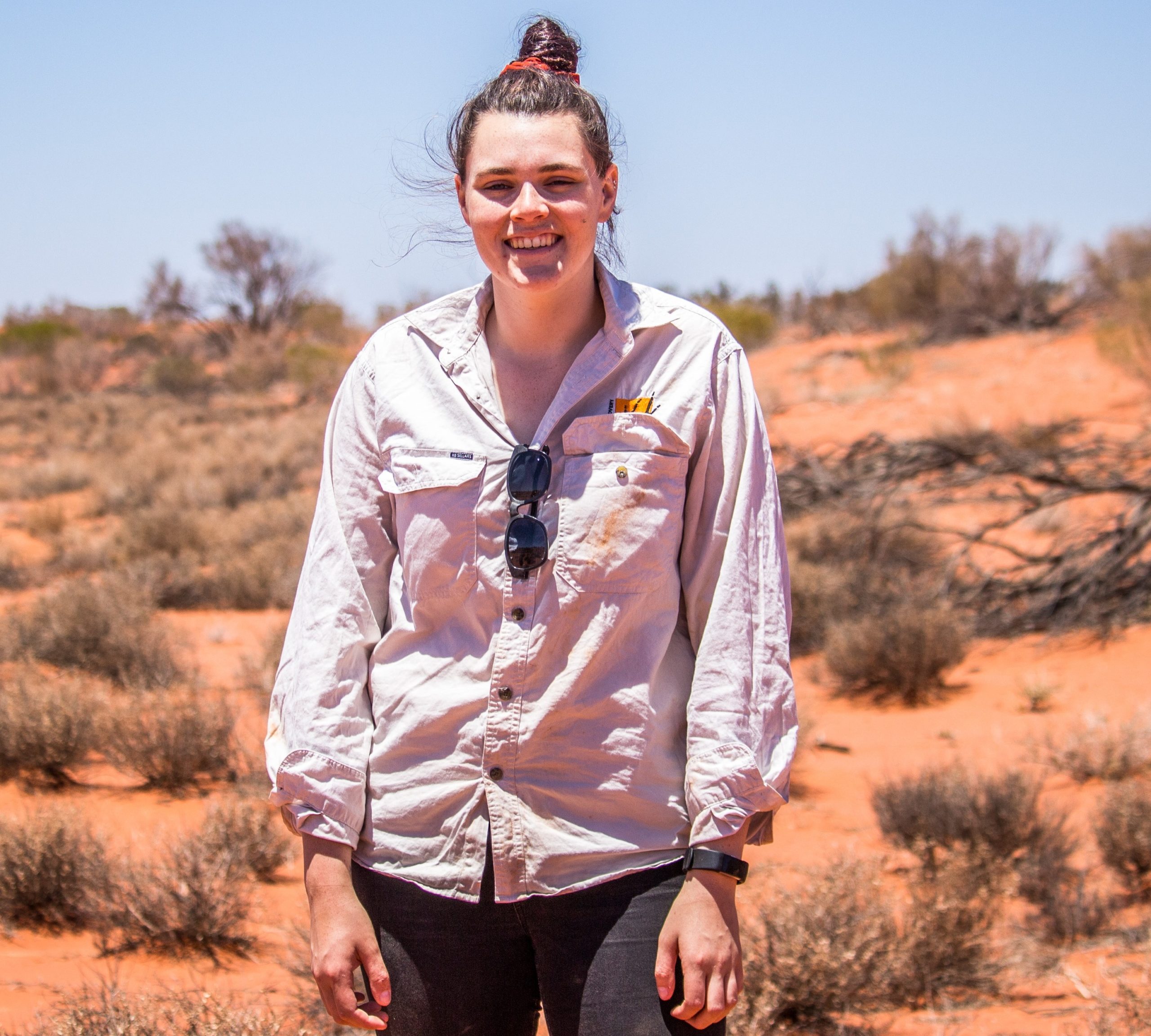By Nathan Beerkens & Harrison Talarico
Sliding your hand into holes in the leaf litter is usually not a good idea. Although it might be if you are searching for rare bandicoots.
That is the situation Melissa Jensen found herself in as both an Honours student and while Reintroduction Officer at Arid Recovery, wandering the dunes of the reserve searching for Australia’s smallest, and maybe most elusive, bandicoot — the Shark Bay Bandicoot.
Shark Bay Bandicoots (previously known as Western Barred Bandicoots) are adorable little critters. About the size of a small human hand, these marsupials are unassuming, extremely secretive, and masters at hiding. In fact, they are so good at hiding that scarcely anyone has managed to locate their nests.
But after years of practice, is Melissa confident in her ability to find a bandicoot’s nest?
“Not without a tracker! [The nests] don’t look like anything… there’s no mound, just flat leaf litter”, Melissa says. “You can’t tell there’s a nest there, not even when an animal is in there!”
In the early 2010s, there were concerns that Arid Recovery’s exploding bettong population would result in a greater disturbance of leaf litter and impact bandicoot breeding efforts. Although this concern may sound overstated, at their peak, bettongs numbered over 6,000 in the reserve, well above carrying capacity. You can imagine the commotion these bettongs would have caused—hopping around and kicking the leaf litter in every which way.

Luckily for the bandicoots, Melissa found that they are not very picky about where they live. “It doesn’t matter how much litter is around; if there isn’t enough, they’ll scrape up more”.
It seems remarkable, but any flat patch of leaf litter in bandicoot country could have a bandicoot hiding underneath, or even a whole family. Melissa recalls one day when she reached into the leaf litter and suddenly felt fur.
“I pulled my hand out straight away, and waited there all afternoon. I waited for the sun to set and the bandicoot to leave the nest”.
Melissa was excited to see the animal emerge after sunset, but she was also waiting to measure the inside of the nest and gain insight into how these secretive creatures live. Hours later, she got what she was waiting for — Australia’s smallest bandicoot poked its nose out, took a look around, back-filled its hole, and ran off. And then, “I heard the leaf litter rustle again!” Staying very still, Mellissa witnessed a magical moment, as two tiny bandicoot babies emerged to explore the big, wide world.
“They played around for a bit and then went back into the nest, they even back-filled the entrance behind them. I didn’t get to measure the nest that night!”
Shark Bay Bandicoots are now found naturally on only a few small islands off Shark Bay, Western Australia. While small bandicoot species (including the Shark Bay Bandicoot) were once found across southern Australia, they have since become extinct on the mainland—largely due to the impacts of introduced species such as cats and foxes. They are remarkably dainty creatures that bring joy and a little ‘squee’ to all who meet them. It is a shame they are so rare across their former home range.

Thankfully, more reintroductions are in the works to return Shark Bay Bandicoots at many sites around Australia. This year Arid Recovery supplied bandicoots to Mallee Refuge (on the Eyre Peninsula in South Australia) and Wild Deserts (corner country NSW). Those pioneering bandicoots have settled into their new homes and are breeding well. Hopefully one day, bandicoots will again be found digging away in more places still.
As for the Arid Recovery population, our latest counts (April 2022) show they are thriving. It’s amazing what removing cats and foxes can do to help these lovely native diggers survive.

Adopt a bandicoot today, or tell a friend about them!





















